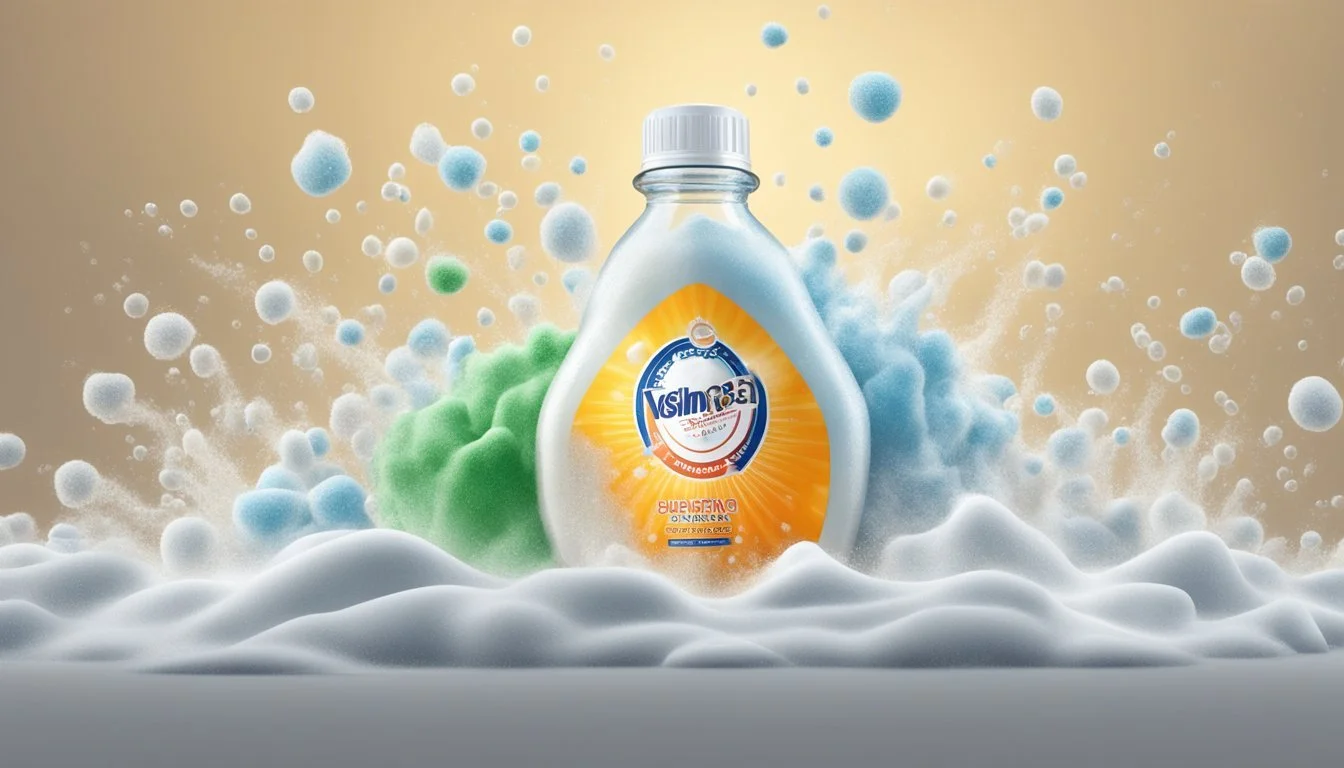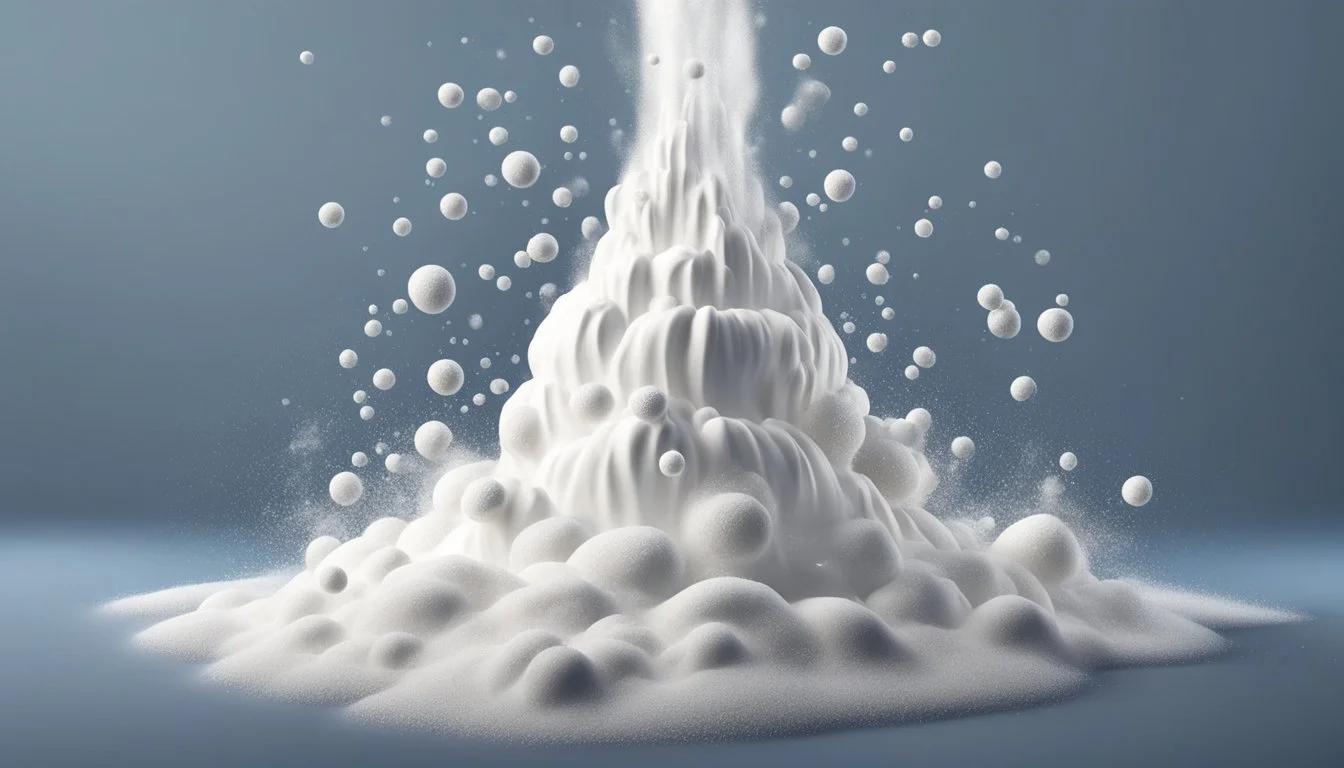How to Create a Baking Soda Volcano for Cleaning Drains
An Effective DIY Guide
A baking soda volcano is a creative and educational way to address clogged drains using simple household items. By combining baking soda (sodium bicarbonate) with vinegar (acetic acid), a chemical reaction occurs, producing carbon dioxide gas. This effervescent reaction can help dislodge and loosen debris that may be causing blockages in household plumbing.
The science behind this method is straightforward yet effective. Sodium bicarbonate reacts with acetic acid to form carbon dioxide gas, water, and a salt called sodium acetate. The generation of carbon dioxide creates pressure and agitation in the drain, which can break up clogs and allow for easier removal. This reaction is not only practical for cleaning purposes but also non-toxic, making it an environmentally friendly alternative to harsh chemical cleaners.
Employing this technique requires careful preparation and timing to maximize the reaction's potential to clear drain blockages. It is a safe and cost-effective solution for minor clogs, making it a popular choice for periodic drain maintenance and cleaning.
Understanding Drain Cleaning
Cleaning drains is essential to maintain a seamless and efficient plumbing system. This section will discuss the scientific principles of using baking soda and vinegar for cleaning, the common culprits behind drain blockages, and the safety practices to observe when choosing different cleaning methods.
The Science Behind Baking Soda and Vinegar
The combination of baking soda (sodium bicarbonate) and vinegar (acetic acid) creates a chemical reaction. When these two household products meet in a drain, they react to form carbon dioxide gas, water, and sodium acetate. This effervescence can help dislodge clogs formed by grease, food particles, and grime by creating pressure and releasing carbon dioxide that can break up the blockage in the pipes.
Common Causes of Clogs
Clogs in household plumbing are typically caused by the accumulation of various materials:
Grease and Oil: These can solidify inside pipes, attracting other debris.
Food Particles: Larger, insoluble particles can get trapped, creating a block.
Hair and Soap Scum: A common issue in bathroom drains, these can bind together, obstructing flow.
Mineral Deposits: In areas with hard water, calcium and magnesium can build up, narrowing pipes.
Avoiding pouring such substances into the drains is a preventative measure, but when clogs occur, household products like baking soda and vinegar can be an initial approach before resorting to chemical drain cleaners.
Safety Considerations and Alternatives
When considering drain cleaning options, safety is paramount. Chemical drain cleaners, while effective, can pose risks to health and the environment:
Chemical Exposure: These cleaners can release harmful fumes and cause irritation if touched.
Pipe Damage: Harsh chemicals can erode some piping materials over time.
Using baking soda and vinegar can be a safer alternative—being non-toxic and environmentally friendly. However, persistent clogs may require mechanical methods like plunging or professional plumbing services. Regular maintenance and cautious use of drains will keep them clear and help avoid the need for harsh cleaning agents.
Materials and Preparation
Creating a baking soda volcano for cleaning drains effectively requires precise materials and safe, preparatory practices to ensure a successful outcome.
Gathering Necessary Materials
To prepare a baking soda volcano for cleaning drains, one will need the following materials:
Baking Soda: A base that reacts with vinegar to produce the necessary cleaning action.
Vinegar: An acid that will react with baking soda to create pressure and movement to loosen drain clogs.
Hot Water: Used after the reaction to flush out any residual debris.
Water: Necessary for preparing the reaction mixture.
Funnel: Aids in directing materials into the drain without spillage.
Flour: Not typically required for drain cleaning, but used in constructing a model volcano.
Dishwashing Detergent: Helps create a foaming action which can aid in dislodging debris.
Red Food Coloring: Adds a visual effect resembling lava, usually excluded in cleaning applications.
Clean Cloth: For wiping down surfaces and cleaning up any spills.
One should omit flour and red food coloring since these items are not relevant to drain cleaning and are typically used for educational or demonstration purposes.
Safety and Preparatory Measures
It is crucial to observe the following safety and preparatory measures:
Always wear protective gloves to prevent irritation from vinegar.
Ensure the work area is well-ventilated to avoid inhaling fumes from the reaction.
Clear the area near the drain of any objects that might be damaged by spills.
Use a clean cloth to cover surfaces for easy cleanup in case of any overflow.
By adhering to these guidelines, one can safely and efficiently use a baking soda volcano to clean household drains.
Step-by-Step Guide
Creating an effective baking soda volcano for cleaning drains utilizes a natural chemical reaction that can help unclog and freshen sinks, showers, and bathtubs. This guide focuses on the detailed steps to perform regular maintenance and clear slow drains using basic household items.
Creating the Volcano
To prepare the volcanic cleaning mixture, one will need:
Baking soda: a natural abrasive and base component of the reaction.
Vinegar: the acid that reacts with baking soda to create the unclogging foam.
Instructions:
Remove the sink stopper or drain plug.
Pour 1 cup of baking soda directly into the drain.
Cleaning Process Execution
The reaction between baking soda and vinegar will generate a vigorous bubbling action that helps dislodge buildup.
Instructions:
Slowly pour 1 cup of vinegar into the drain over the baking soda.
Let the mixture sit for 5-10 minutes as it reacts and loosens the clog.
Rinse and Finishing Steps
After the reaction has had time to work, rinsing away the residue is crucial for a complete cleaning process.
Instructions:
Boil 2 liters of water.
Carefully pour the boiling water down the drain to flush out the loosened debris.
For persistent issues, one may repeat the process.
Ensure to perform this maintenance regularly to keep drains clear and prevent build-up from becoming a significant obstruction.
Tips for Maintaining Clean Drains
Maintaining clean drains is essential to prevent clogs and ensure water flows smoothly. This section provides specific strategies for preventive actions and regular maintenance routines.
Preventive Measures
To avoid the inconvenience of a clogged drain, there are several effective strategies residents can employ. Installing a drain strainer in sinks and showers can trap debris and prevent it from entering the pipes. Additionally, one should avoid pouring oils, fats, and coffee grounds down the drain, as they can solidify and accumulate, causing slow drains or blockages.
What to Avoid: Oils, fats, coffee grounds, hair, and other fibrous materials should never go down the drain.
Drain Strainer: A simple, yet effective tool to catch debris before it causes issues.
Regular Maintenance Routines
Regular maintenance is crucial to prevent slow or clogged drains. Here are two essential routines that homeowners can perform:
Weekly Flushing: Run hot tap water down the drains to help dissolve any beginning build-ups and to keep pipes clear.
Monthly Baking Soda Treatments:
Sprinkle 1/2 cup of baking soda down the drain.
Follow with a mixture of hot water and vinegar.
Allow it to sit for 30 minutes.
Finish with a rinse of hot water to flush away any loosened debris.
Incorporating these simple routines into a regular cleaning schedule helps maintain clear and odor-free drains.
Troubleshooting and FAQ
When creating a baking soda volcano for cleaning drains, users may encounter a variety of blockages. This section addresses common problems and supplies expert advice to ensure effective drain cleaning.
Common Issues and Solutions
Clog persists after treatment:
Cause: Residue such as grease, hair, or other debris is often too solidified for the reaction to clear.
Solution: Repeat the procedure a second time, and use boiling water to aid in breaking down stubborn clogs.
Weak reaction:
Cause: Insufficient acidity, or a drain overly full of water diluting the vinegar.
Solution: Ensure the drain is as dry as possible before adding the baking soda and vinegar mixture.
Slow drainage after treatment:
Cause: Partial blockage remaining in the drain.
Solution: Use a plunger to help dislodge remaining debris after the volcano reaction.
No fizzing action:
Cause: Baking soda or vinegar may be old and have lost their potency.
Solution: Use fresh ingredients to guarantee a vigorous reaction.
Expert Advice and FAQs
Q: How often should one use the baking soda volcano method to prevent clogs?
A: Utilize this method once a month as preventative maintenance to keep drains clear of gunk and buildup.
Q: Can the baking soda and vinegar damage pipes?
A: No, this combination is safe for most piping as they are natural, non-corrosive substances.
Q: Is the method effective for all types of clogs?
A: It is most effective on organic blockages like hair and grease but may not resolve issues with solid objects or mineral deposits.
Q: What are the measurements for the baking soda and vinegar?
A: Use one cup of baking soda followed by one cup of vinegar for an average-sized drain.
Q: Can I leave the baking soda and vinegar mixture in the drain overnight?
A: This is unnecessary and typically not more effective than allowing it to sit for 30 minutes to an hour.
Environmental Considerations and Benefits
Creating a baking soda volcano for cleaning drains is an eco-friendly alternative to chemical cleaners. It reduces environmental impact and is safe for PVC pipes.
Eco-Friendly Cleaning Methods
Using vinegar and baking soda as cleaning agents offers a sustainable way to unclog and freshen drains. Unlike chemical drain cleaners that can contain harsh substances, these natural ingredients do not pose a threat to the environment upon disposal. When cleaning drains:
Baking soda acts as a gentle abrasive to scrub away grime.
Vinegar's acidic properties break down the organic materials causing blockages.
Combining both produces a foaming action that can dislodge clogs.
Moreover, following with hot tap water aids in flushing away debris loosened by the reaction, providing a thorough clean without any toxins.
Impact on Plumbing and Environment
Baking soda and vinegar are not only safe for use in PVC pipes, but they also mitigate the potential harm that chemical cleaners may cause to the plumbing system and wider environment. Chemical cleaners often:
Release harmful substances into waterways.
Disrupt the bacterial balance in septic systems.
Corrode and damage pipes over time.
In contrast, baking soda and vinegar are natural substances that dissipate harmlessly, making them environmentally friendly options for maintaining clean and functioning drains.
Conclusion
The use of baking soda and vinegar, particularly distilled white vinegar, is an effective method for cleaning drains. When these two household ingredients are combined, they create a foaming action that can help to dislodge clogs and remove debris. This combination not only clears the way but also addresses odor-causing bacteria, leaving drains fresh and clean.
For best results, homeowners should consider making this procedure a regular part of their maintenance routines. Adding salt to the mix can enhance the scouring action. While distilled white vinegar is commonly recommended for its cleaning prowess, apple cider vinegar may also be used as an alternative. To deodorize the drain, one can simply flush it with hot water after the reaction has taken place.
Recommended Steps:
Pour 1/2 cup of baking soda into the drain.
Add 1/2 cup of vinegar, using distilled white vinegar for cleaning or apple cider vinegar for a more fragrant option.
Quickly cover the drain to contain the reaction and maximize effectiveness.
Allow the mixture to sit for 30 minutes.
Flush the drain with boiling water to rinse away the residue.
Implementing these simple steps can help maintain free-flowing, deodorized drains and offer a non-toxic solution to the homeowner's cleaning needs.







